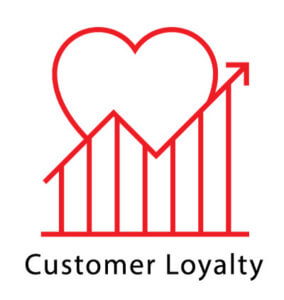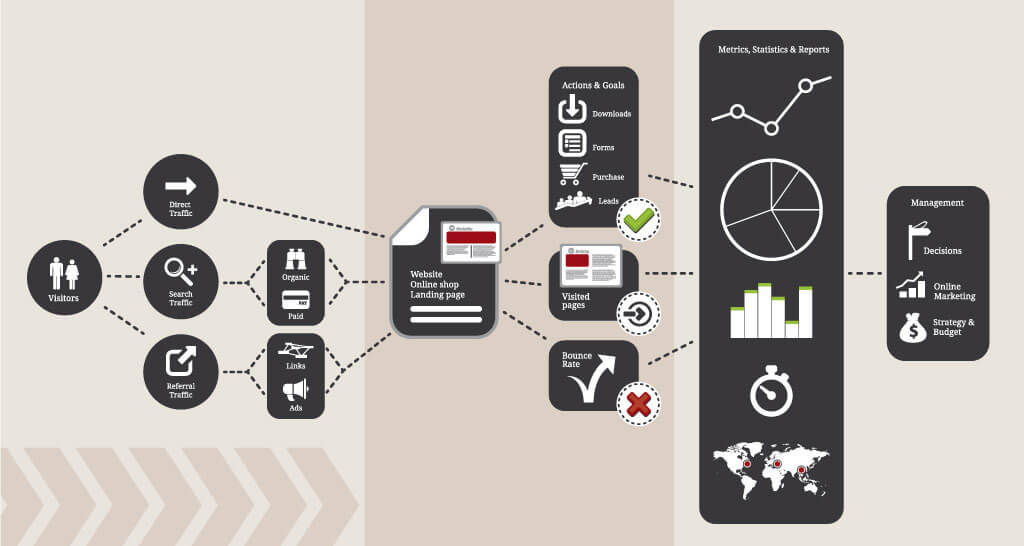Unlike other market research, content analysis is more qualitative and less quantitative.
This means that marketers are hardly looking to quantify or measure specific patterns. Rather, they’re looking to understand their consumers more thoroughly.
They’re investigating customer viewpoints of content that is already existing through their site.
This is much more useful to businesses for a number of reasons. Primarily, it provides a much more in-depth, detailed look at their current strategies.
Content analysis aids in finding what exactly is and isn’t working for marketers. By design, the strategies involved to gain this information are much more open-ended.
In the past, you may have found that qualitative research was enough. But, now, with the heavy emphasis on content marketing, you need to take a finer look. Read on to learn how to perform a content analysis.

Step 1: Prepare Already Existing Data
The first crucial step to any research plan is preparation.
The different facets of your plan will rely on its initial devising and development. So, it’s of utmost importance you start here for your content analysis.
You’ll want to begin by recording and analyzing what you already published on your site. We recommend using a spreadsheet to compile this information.
You should be breaking down each element of your site into its own column. That includes links, videos, photos, infographics, audio, etc.
This is so you can determine the exact root of problems, whether it be a broken link or slow loading image. These seemingly small elements are actually very relevant to your site’s success.
Step 2: Examine Content
After you record information, it’s time to dive deeper into your content strategies. This is when you attempt to find any errors or inconsistencies within your site.
You can gather this information from a number of methods. The most valuable, however, is to speak with your customers directly.
Interview Your Customers
It’s crucial to decide who to speak to for your content analysis and how you will reach these people.
We recommend holding brief phone interviews with existing customers. It’s inexpensive and time efficient. Also, they already have a foundation with the company.
So, what are you supposed to interview your customers about? What kind of questions should you be asking?
As stated above, to receive the most valuable insight, you want your questions to be open-ended. That means no questions that will elicit yes or no answers, as this is a content analysis.
Rather, prompt them so they’re able to elaborate on their thoughts and go into detail. There are several key phrases/questions to encourage them to open up:
- “How do you feel when you read/see XYZ?”
- “Describe your thoughts on this (blog article/picture/video/etc.).”
- “What enticed you to read/view this information?”
- “For what reasons would you recommend a family member or friend to come to this site? What kind of content would they expect to see?”
- “If you could tailor [refer specific element from the site] to your own liking, would what you change?”
These are just a few of many ways to draw out an answer from your subjects. The key is to stay neutral, not argue, and to listen thoroughly.
Make sure that you’re always getting a customer’s approval before recording your conversation. Also, it helps if you can take notes during the interview for your own reference.
Analyze Information Internally
One method that doesn’t require any external help is to examine content from within. That means calling on employees and bosses to study what they see.
 With an internal review, you do have to be careful of a few different things. Ironically, the main issues fall on two different ends of their respective spectrum. It’s common for those who were behind the content’s creation to not see it for what it’s worth.
With an internal review, you do have to be careful of a few different things. Ironically, the main issues fall on two different ends of their respective spectrum. It’s common for those who were behind the content’s creation to not see it for what it’s worth.
That can mean that they’re overly critical of their work. Or, it can mean that they are too infatuated with their own work. Clearly, both won’t get you very far.
On the same token, it can be difficult for others to speak constructively about other works. They may feel apt to be (wrongfully) more or less critical of their colleague.
So, to avoid this, we recommend on reaching out to employees in other departments. They should have a thorough understanding of the company’s goals and marketing targets.
Since they already have a grasp on what the company’s looking for, it shouldn’t be hard to discern good and bad.
Similarly, you’d want to ask these employees to provide a detailed analysis of the content. Get them talking by asking questions where they’re forced to answer more than yes or no.
Outsource Help
If neither of these solutions seems appealing to you, then you have one other option. You are always able to look externally for outside paid help.
This has its own obvious advantages and disadvantages. The major disadvantage here is you’re having to pay this person, so it does cost more than the other methods.
But, you can’t put a price on good quality content analysis. It’s actually a small price to pay given the quality information you’re receiving.
It’s also beneficial to hire outside help because they’re going to know what to look for. Unlike your other subjects, they know what is good and bad for your site. They can also offer more conclusive data to support your content analysis.
Step 3: Begin The Actual Content Analysis
Don’t worry- it’s not as bad as it may sound. With the right information upfront, you should be able to navigate through this part of the content analysis easily.
So, where to begin?
Record Information
 Well, it really depends again how you went about gathering your information. If you sought outside help, then your data is already going to be a little more put together.
Well, it really depends again how you went about gathering your information. If you sought outside help, then your data is already going to be a little more put together.
If not, you’ll need to begin compiling your information into a document or spreadsheet. You should have recorded answers, so it’s imperative to make note of all that your subjects said.
Even if the information may seem irrelevant at the time, it’s good to make not just in case. Before looking back at this information, it’s hard to know what you need to take away.
Evaluations
This is where you take time to go in and examine what was said. You should separate your internal and external efforts into different sheets at first. This is to help spot any inconsistency between the two.
You’re going to want to notice customer reactions and stories from your questions. Pick up on key phrases that are relevant to how they feel about certain elements and why.
Are you finding any consistent patterns within answers? That’s an obvious sign that you’re doing something either very well or very bad. It shouldn’t be too hard to spot a strength or weakness based on these suggestions.
You should receive feedback about whether the content is interesting and informative. Also, they will likely report whether it functions as it should. This includes loading times, links, image quality, etc.
They may also bring some things into the mix that you hadn’t thought of. Maybe they’ll make you aware of elements that are outdated or no longer true or useful.
It should be pretty obvious what your review team likes and dislikes about your content. Take their suggestions and develop accordingly.
Metric Measuring
We’ve now gone over how to conduct a content analysis from a quantitative standpoint. Now, it’s time to shift gears into reverse and briefly discuss qualitative research.
As mentioned above, it’s useless to focus solely on qualitative research. You won’t find any concrete solutions to errors by relying on numbers and metrics.
But, they do provide a systematic look at your current strategies. Don’t leave this out of your content analysis. Instead, use it to complement the existing information.
Measure SMART
Your usual media metric strategies still may not be cutting it. You need to be doing more than just measuring data- you need to be measuring SMART.
Your measurements need to be:
(S)pecific, (M)easureable, (A)chievable, (R)elevant, and (T)ime-bound.
So, how do you achieve that? Well, for starters, you’ll want to identify your key metrics. Those are the statistics that matter most to your company goals.
Let’s say you want to increase website visibility by 10% in 6 months through your marketing plan. You’d want to analyze your site’s number of clicks, views, and the time spent on the page.
This metric is specific and time-bound, with a goal of discovering page engagement. It’s relevant because the metric relates back to your objective.
It’s clearly measurable through a software program. Also, for argument’s sake, we will say its achievable. (Note: You’ll need to reflect on your own data to determine what an achievable goal for your company would be.)
Types of Metrics to Measure
As mentioned in the last point, your metrics need to be specific to your goals. This can still be difficult to determine for some, so we’ll break this down a little further.
Here are the most common goals of marketers. Also, there are metrics by which you should measure each one.
Brand Awareness
With brand awareness, your primary goal is to get in front of customer’s eyes. But, that’s only half the battle. The true challenge comes with retaining their interest.
Some sample metrics for discovering brand awareness are:
- How many people witnessed a piece of content
- How many of these visitors were new/never been to the site before
- How many outside sources linked back to this piece of content
Engagement
Did we say it was hard enough getting people to your page? Well, we have bad news. It’s even harder getting people to engage with your content.
You need to drum up some resonance for your viewers for them to interact with you digitally. You should evaluate the following:
- Shares of content onto social media, blogs, news sites, etc.
- Engagement on these posts- comments, likes, etc.

Loyalty
Once you reeled them in, have you managed to keep them engaged? In other words, have you retained customer loyalty?
You can find this out by measuring:
- The number of repeat business through your site; You can track this through customer profiles, ‘reorder’ options, etc.
- How many haven’t reordered, canceled subscriptions, returned products, etc?
Cultivating Leads
The beginner step to any marketing strategy usually revolves around lead generation. As we know, traffic generates leads, and leads in turn, generates sales.
So, how many leads are generating through your content strategy? You’ll want to measure:
- How many leads you are currently retaining; analyze this however you track your leads, whether through subscriptions or other databases
- Percent of leads that grow into a sale (If you don’t currently measure this, now would be a good time to start.)
Sales
Lastly, comes our sales. This part of the content analysis shows that you’re aware of your state in the market.
You can track this by measuring your conversion rate. How many leads were you able to nurture into sales?
Note: Sales doesn’t have to transcribe literally to sales. It can also mean “downloads” if that is one of the end goals you have for your consumer.
Whew, We’re Out of Breath- Let’s Wrap Up Our Content Analysis
Once you have identified your metrics, quantitative and qualitative, you should understand your content strategy a little more thoroughly.
With this information, you’ll be able to make the necessary adjustments to your marketing plan. Make sure you’re consistently doing a content analysis to ensure you’re always on top of your game.
Doesn’t sound like your cup of tea? That’s okay- that’s where we come in.
At Five Channels, we know a thing or two about staying on top of your content game. That’s because we’re professional marketers ourselves.
Whether you need help with analyzing your content strategy or even creating one, we’ve got you covered. Contact us today to learn about our services and how we can help you.
Owner and Chief Marketing Officer, Jason Hall, and his team specialize in creating brand awareness / traffic and lead generation / marketing funnel and conversion optimization, while utilizing the appropriate marketing channels available within your industry. With diverse clients throughout the world, Jason's team is well connected within many industries to assist with your marketing strategies. With no long term contracts and various levels of service, Jason's team will increase the quality of your online traffic, leads, and sales.
About the author...
Located in the heart of the Emerald Coast - Destin, FL, founder and Chief Marketing Officer, Jason Hall, and his team specialize in creating brand awareness / traffic and lead generation / marketing funnel and conversion optimization / and PR campaigns, while utilizing the appropriate marketing channels available within your industry.
With diverse clients throughout the world, Jason's team is well connected within many industries to assist with your marketing strategies. With no long term contracts and various levels of service, Jason's team will increase the quality of your online traffic, leads, and sales.










